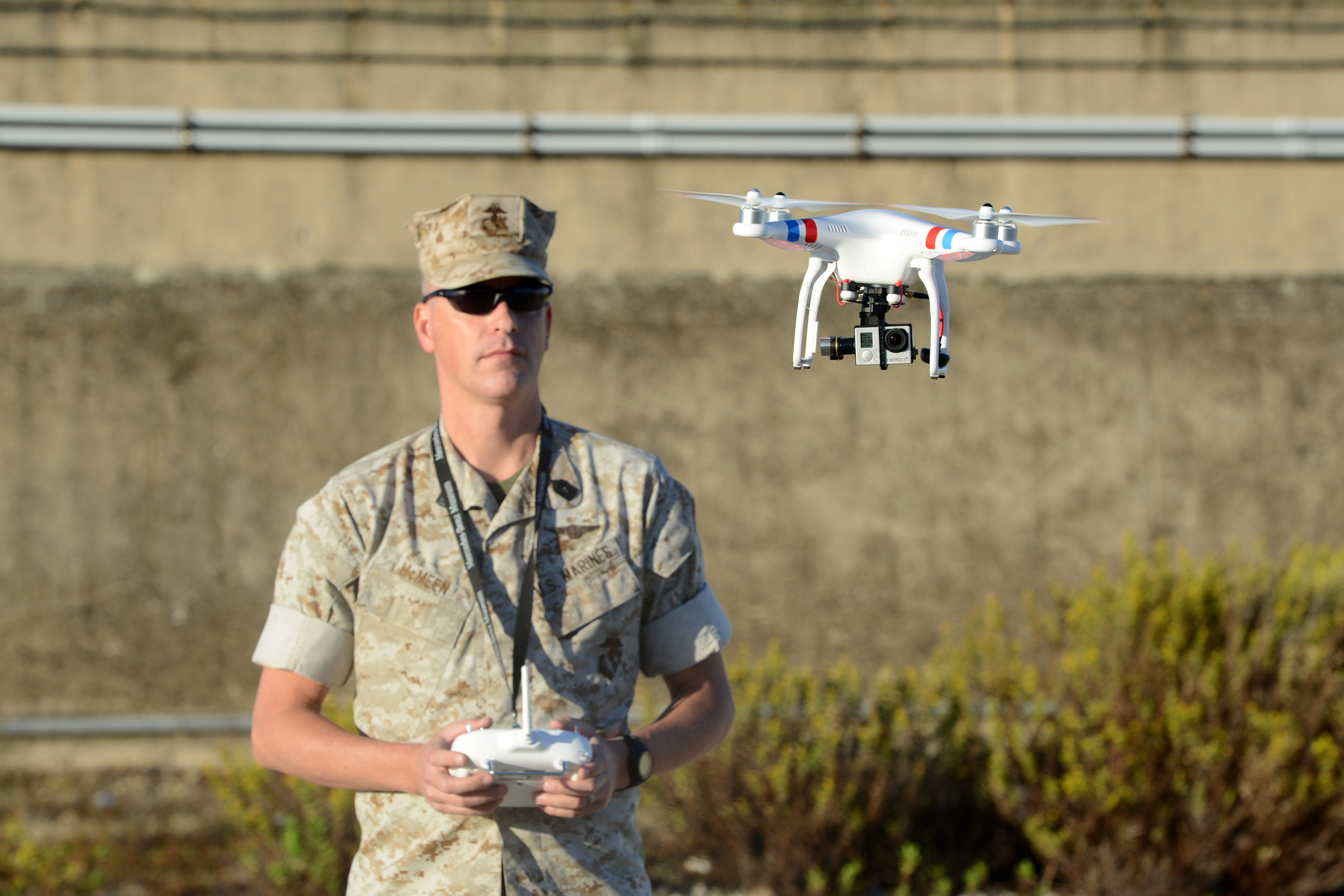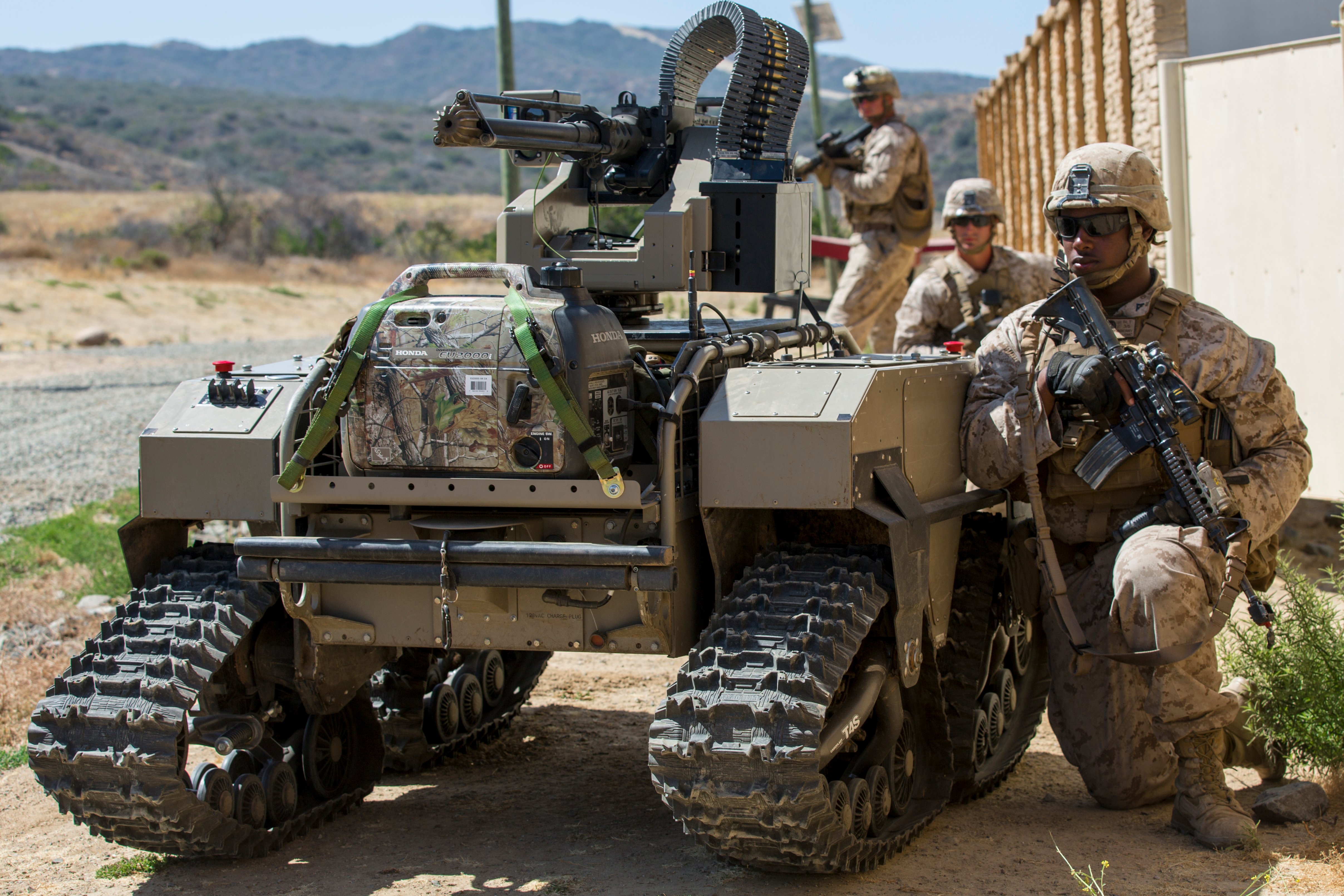
ARLINGTON, Va. — The Marine Corps recently launched three major innovation efforts that are already informing the service’s unmanned systems’ priorities, the deputy commandant for combat development and integration said today.
This year the service launched a Marine Corps Force 2025 effort to look at restructuring the force to meet current and future needs such as cyber and electronic warfare, a Sea Dragon 2025 experimentation effort to test out new concepts and technologies, and a Commandant of the Marine Corps Innovation Portal to solicit ideas on a variety of topics.
Lt. Gen. Robert Walsh said today at the Association for Unmanned Vehicle Systems International’s (AUVSI) annual defense conference that each of the three vehicles for innovation had already begun yielding ideas for unmanned tools.
For example, the Marine Corps already knew it wanted unmanned ground vehicles to help lighten the load infantry Marines have to carry on foot patrol. What it hadn’t considered, though, was a system it tested during the Marine Air-Ground Task Force (MAGTF) Integrated Experiment 2016 (MIX 16), conducted under the Sea Dragon 2025 banner. In the experiment, Walsh said, Marines in a valley sent ground robots with sensors and weapons up the ridge line to peer over – something reconnaissance Marines would normally do themselves, potentially exposing themselves to enemy fire or risking giving their position away. These robots could go up over the ridge line, sense and locate enemies based on radio frequency signatures, and then lase and shoot guided weapons at enemy targets as needed.
MIX 16 also included experiments with Lethal Miniature Aerial Munitions Systems, which could be launched from a ground vehicle or even an aircraft such as the Joint Strike Fighter.
“We’ve got our Light Armor Reconnaissance battalions out located forward, and now they’re sensing by running into the enemy – not a whole lot different than reconnaissance units or cavalry units had done all the way back to the Civil War,” Walsh said.
“If we can bring those kinds of unmanned systems where our LAVs are out forward, our reconnaissance units are forward and they can launch their own capabilities, a LOCUST-type capability or lethal munitions that we could send out in the air that can sense, locate different RF signals and then attack those capabilities in advance of where the Marines are, keeping them out of harm’s way.”

In the more immediate future, MIX 16 led to the decision that the Marine Corps would buy quadcopters to field one per squad for four battalions of Marines, and would add the position of assistant squad leader to help operate the quadcopter, tablets and other incoming technology without over-burdening the squad leader. Walsh said all 24 battalions will eventually end up with small UAVs but, in a nod to the military-wide push for rapid prototyping, the service will buy some quadcopters now, see how the users like them, see how technology evolves, and then purchase another batch of UAVs in the near future to outfit more units.
Outside of MIX 16, the Sea Dragon experimentation push is leading to new teaming efforts to test ideas and technologies. Walsh suggested that the new F-35B Joint Strike Fighter could serve not just as a sensor and shooter but also as “the quarterback out there for lots of our unmanned systems.” To test this idea, the service brought together the experimentation battalion, 3rd Battalion 5th Marines, with the Marine Operational Test and Evaluation Squadron 1 (VMX-1) to look at how to use F-35 in new ways – particularly as it relates to manned/unmanned teaming, Walsh said.
On the Commandant’s Innovation Portal, the first round of submissions was collected from Sept. 15 through Oct. 15, and ideas are being evaluated now through the end of the month. The first round focused on autonomy and manned/unmanned teaming ideas, but Walsh said the next round would focus on innovation in logistics: “distributed operations with logistics, a lot of sensing with logistics – that’s a key part we’re starting to see is logistics-on-demand, so being able to sense what they need at the pointy edge of the sword so they can report back instead of carrying the iron mountain with them.”
Ideas will be solicited starting in December, with a new challenge on a new topic being issued each quarter.
And finally, on the Marine Corps Force 2025 front, the service has already moved past its Phase I, where potential courses of action were presented to Commandant Gen. Robert Neller to help consider how the force could be restructured to be more effective at emerging missions like electronic warfare, cyber warfare, information warfare and more. In the ongoing Phase II, specific decisions regarding how to pay for this future force are being considered. Walsh said it was already clear that a new emphasis on information warfare would require additional resources to go towards unmanned systems and artificial intelligence.





